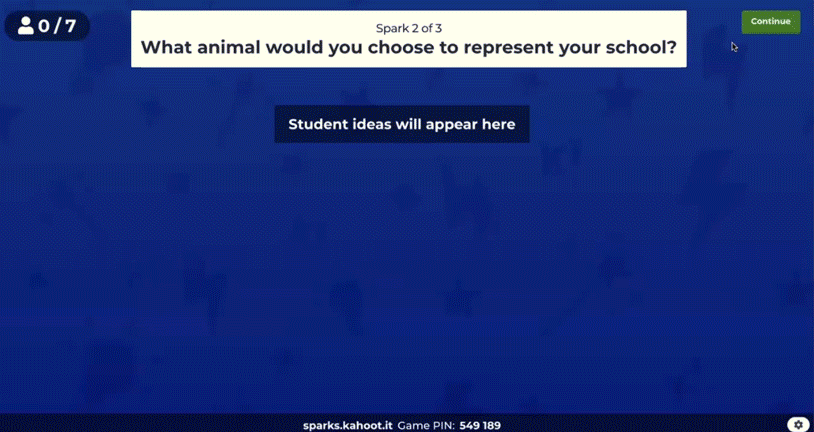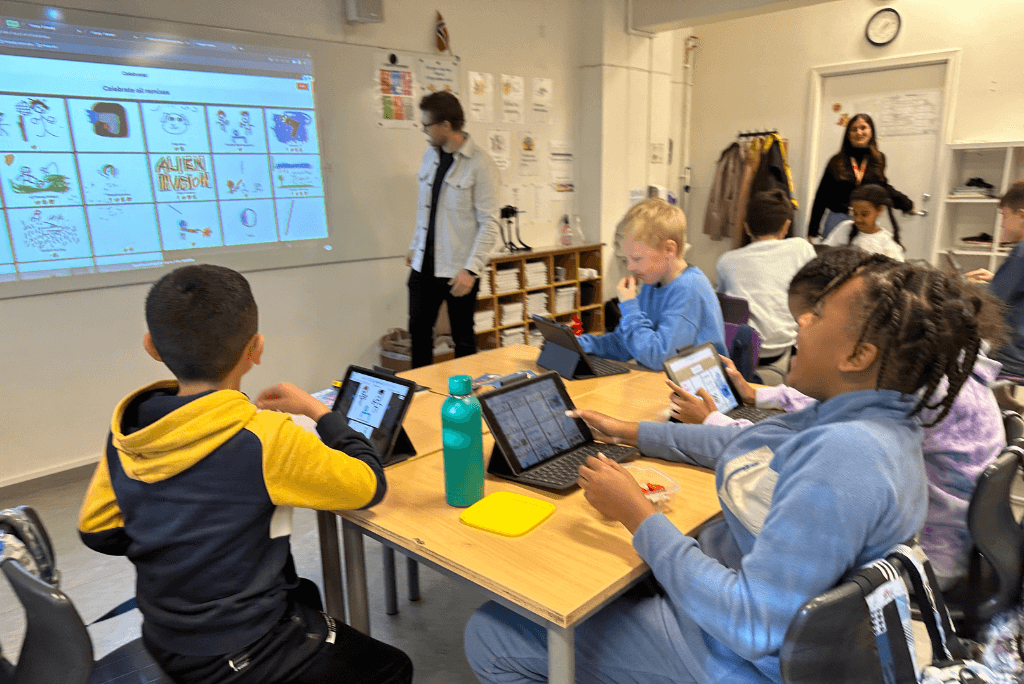- Showcasing sign language for Hard of Hearing or Deaf learners
For students with hearing loss or impairment, video can be uploaded as the question, enabling teachers to create a video with American Sign Language.
- Flexible learning options to support neurodiversity
Kahoot! has a variety of game modes and question types that help students with Autism, ADHD, and other neurodevelopmental differences engage with learning content and build concentration and focus.
- Reducing test stress and anxiety
With multiple modalities, teachers can choose from a variety of question types and answer options, such as open-ended, picture responses, pin answer, and puzzle to name a few. This enables teachers to create questions that let students show what they know in different ways. For example, students can use the pin answer feature instead of feeling anxious about typing or spelling. Research shows that Kahoot! helps reduce stress and anxiety from test taking.
- Extended time accommodations or no timer
The time limits on a quiz in Kahoot! can be adjusted if students need an extended time accommodation. With our new feature, Accuracy Mode, the speed of answering questions doesn’t matter. Everyone gets the same amount of time and points are awarded only for accuracy, not speed, making it a more accessible experience for students who want to take additional time to answer. Students are encouraged to slow down, think critically, and answer with confidence.
Educators can also remove the timer by assigning kahoots to students. When playing an assigned kahoot, students play at their own pace, enabling them to participate without added time pressure. In addition, teachers can assign kahoots to specific students, allowing them to tailor the learning experience to those students’ needs.
- Multiple means of engagement
Beyond choosing from a wide variety of question types, educators can also engage students with a growing selection of game modes. Based on powerful pedagogy, Kahoot!’s game modes transport students into captivating worlds of playful learning, challenging them to answer questions and show their knowledge in different ways. The gameplay can also help students strengthen key skills. For example, teachers are using the Treasure Trove game mode to help students improve focus and concentration for special needs children. Kahoot!’s game modes can foster inclusive learning by giving students more ways to engage with information, flexible pacing, as well as using repetition to reinforce learning, and emphasizing collaboration toward a shared goal.
- Celebrating all students’ achievements
With Kahootopia, students work together to build a class island by completing Kahoot! games, boosting teamwork as the class levels up and celebrates their shared achievements. This can help motivate all students to participate, including students who are usually reluctant to speak up.
As Elisabeth Lainez shared, “I have had students who have difficulty expressing their thoughts and emotions to others, but when it comes to Kahoot!, they are excited to come together and win items for the class island.”
- Self-paced and cooperative math learning
Kahoot!’s suite of engaging math games offer built-in differentiation features, making it easy for teachers to create inclusive experiences while engaging the entire class. Students can play and learn at their own pace, while working toward a shared goal. In Duck-Duck Fractions, students work to solve increasingly difficult fraction puzzles to help Duck-Duck find his spaceship and blast off! Pop-Pop Multiplications challenges students to solve multiplication puzzles, exploring concepts through personalized learning journeys. Students can also work toward mastering the foundation of algebraic equations in Wash-Wash Operations. As students progress, they unlock rewards for the entire class, creating a shared sense of accomplishment. For students who need extra practice, the Kahoot! DragonBox math apps guide students from number sense to multiplication, algebra, geometry, and even chess—all with solo play for a personalized learning experience.
- Creativity and collaboration
Created as part of the Kahoot! for All project to support inclusivity in neurodiverse classrooms, Sparks—a teaching tool available in Kahoot! EDU—also focuses on collaboration. Through Sparks, students answer creative prompts with their own unique ideas—expressed through typing or drawing—and then share and remix them with their classmates. This offers a creative experience with no wrong answers, encouraging students to recognize the value of different perspectives.

Our philosophy at Kahoot! is that by creating more inclusive learning environments, we can make learning even more awesome for everyone! When each student can engage in the way they learn best, they can unlock their learning potential, build confidence, and contribute their unique strengths—enriching the learning experience for the whole class.
Want to learn more about using Kahoot! to enhance accessible and inclusive learning environments across your school, district, or teacher group? Sign up for Kahoot! EDU and discover why millions of educators and students worldwide love this all-in-one tool for engagement, teaching, assessment, and review.






